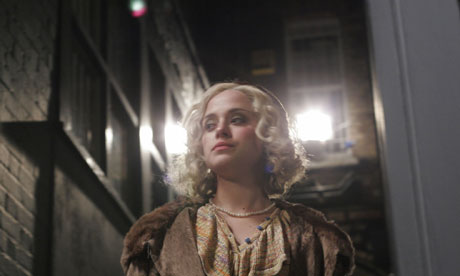
It is very welcome news that English Heritage has put up a blue plaque to Patrick Hamilton, but, considering that he died in 1962, the phrase that springs to mind is "about time". Yes, Brighton has already erected its own, but London is the city that ought to remember him best.
Hamilton is one of those curiosities of English letters: a kind of ghost who flits around the corners of history, glimpsed out of the corner of the eye. He was once described by Terry Eagleton as "a half-forgotten writer who hovers somewhere around the top of Division Two and may be due for promotion" – and this is from someone who liked him. (Doris Lessing's line, a quarter of a century earlier, that he was "a marvellous novelist who's grossly neglected", obviously didn't get the world that much interested in his work.)
But there were those for whom he remained a vivid presence. I was one; perhaps because I had an interest in the fiction of the 1930s, and 40s, the decades in which he produced his best and most enduring work (or, pending a revaluation of his Gorse Trilogy of the 1950s, let us say the decade in which his career gathered its momentum; he had already written Rope, later to be filmed by Hitchcock, to Hamilton's great dissatisfaction, in 1929). If you cared or knew anything at all about the period you were going to run into his name at some point, and if you were a young solipsist with a morbid interest in alcoholic losers, as I was, then the chances were you were going to get round to reading Twenty Thousand Streets Under the Sky or Hangover Square sooner rather than later.
I think it was Martin Amis who said that that last book had one of those titles which is too good for the book it belongs to (an unfair judgement; the title is merely a little too jokey for the book it belongs to). Hangover Square was a novel I particularly relished, being set in the part of town where I then lived, Earls Court. I fancied that in some of the few surviving, untouched pubs that remained I could feel the presence of George Harvey Bone, his doomed protagonist. Here, one felt, was the truth about alcoholism: an addiction as alienating and desperate as that supplied by heroin.
But I am slightly surprised that the plaque that is to commemorate his life has gone up in Chiswick. True, he spent part of his life there, but surely Chiswick is a little out of the way for Patrick Hamilton? He was the laureate of the shabby centre of London, the out-of-the-way corners of Fitzrovia or Earls Court where dipsomaniacs fritter their lives away, trying to pick up barmaids or whores, and failing as miserably in that enterprise as they do in everything else.

